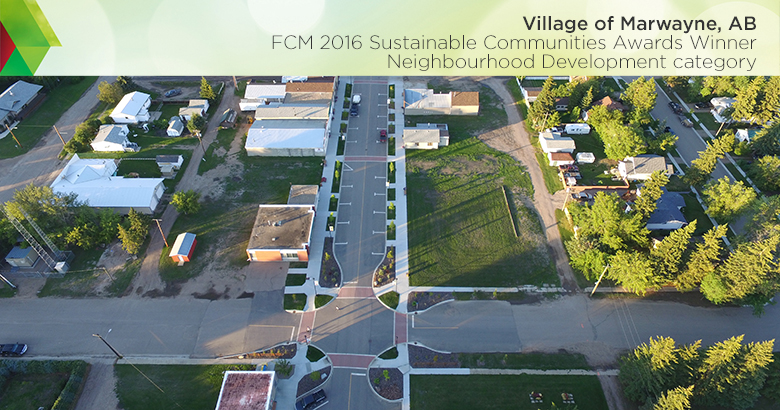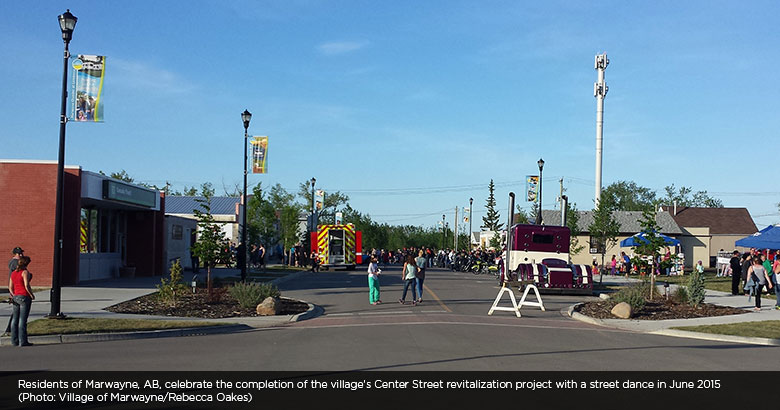Center Street revitalization: From the bottom up!
With an innovative project to upgrade its Center Street infrastructure, the Village of Marwayne completed vital repairs to aging infrastructure and took a giant leap forward in terms of community renewal. Now Center Street is a draw for crowds and a boon for business.
Read the case study below to learn about project highlights, as well as the challenges and lessons learned that can help your community in planning a similar project.

About the project
| Municipal population | Project duration | Total project value |
|---|---|---|
| 667 | 2011–2014 | $2.3 million |
Faced with leaking water and sewer pipes beneath its Center Street, the Village of Marwayne had to dig up the street to replace the pipes. Guided by its Sustainability Plan (2008), Council Strategic Plan (2011) and other information, the village identified an opportunity to rebuild Center Street better than before. The village not only replaced its crumbling sewer and water mains and installed a new stormwater system, but also cleaned up a brownfield site, widened sidewalks, improved accessibility, and added planted boulevards, new street lighting, and signage.
The Center Street revitalization has greatly reduced waterline leaks, cleaned up contaminated soil and improved water quality and supply. It has reduced the village's carbon footprint and created an appealing space for residents doing day-to-day business and attending public events.
A grant program is helping business owners upgrade their storefronts, and the revitalized area has also attracted a new business that will increase tax revenue. Residents hope the project will improve property values for existing businesses and boost the village's economic base.
|


Project highlights
Results
| Environmental | Economic | Social |
|---|---|---|
|
|
|
Challenges
- The village faced criticism against change from a small but vocal minority. Many opponents were upset about the change from angle to parallel parking.
- Construction work on Center Street had a very negative affect on the street's businesses. The village built ramps and added signs to let people know stores were still open, but they did suffer.
- Financing was a challenge. The village tapped into as many grants as possible, accessed reserves and chose to borrow to complete the project.
Lessons learned
- Make sure the sustainability plan is front and centre. Don't let it sit on a shelf; make it a living document that provides guidance and direction.
- Involve professionals in planning, implementing a communications plan, and taking action to overcome obstacles.
- Ensure the project suits the community, and that the community brand is reflected in the design. Engage the community in the process.
- Communicate! Identify a community champion to convey a consistent and accurate message, keep everyone involved and informed, and be consistent in delivering this message.
- Do anything and everything possible to support businesses that are disrupted.
| Partners and collaborators | Project planning documents |
|---|---|
More information
Joanne Horton
Chief Administrative Officer
Village of Marwayne, AB
T. 780-847-3962
Want to explore all GMF-funded projects? Check out the Projects Database for a complete overview of funded projects and get inspired by municipalities of all sizes, across Canada.

